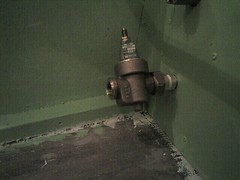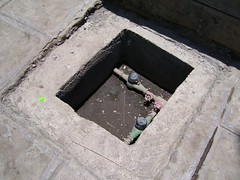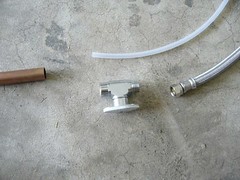By Billy Aldridge
They say that April showers bring May flowers. But what they don’t tell you is that they
also bring with them clogged drains, corroded hose bibs and backed up toilets
that if left unchecked can cause a lot of damage to your home. So springtime is a good time to do some
preventive maintenance on your plumbing, before the summer heat takes its
toll. Below are five items that you
should attend to in May.
1. Is
Your Toilet a Water Hog? – Utility bills being what they are, the last thing
you want to do is pay for wasted water.
The toilet uses a significant amount of water when it is working
properly. When it leaks it can be a real
water hog. There are two ways to check
for leaks in the toiled: by sight and sound.
The first is to add six drops of food coloring to the tank. Don’t flush, just walk away for five or ten
minutes and then return to see if the water in the bowl is clear or
colored. If it is tinted, then you have
a leak. The other way is to flush the
toilet, let it fill and then listen for a minute or two to hear if the water
continues to run intermittently, which happens if the flapper valve is not
working properly. (Check out the video below to see how to correct this issue.)
2. The
Heat is On – Due to minerals in the water, the water heater has a tendency to
lose efficiency over time. To help
alleviate this problem, it’s a good idea to drain your water heater once a
year. To do this all you need is to
connect your garden hose to the drain knob (which acts like a spigot). Next, turn the power to the heater off. (If you have a gas heater you may need to seek professional assistance, unless you are completely comfortable reigniting the pilot light.) Once you have led the opposite end of the
hose outside, turn off the water inlet to the tank so that it won’t fill and
then open the knob that drains the tank. (If the water refuses to drain, turn the water back on in order to blow the sediment out.) Once the tank drains completely, turn the water back on for thirty
seconds or so to allow the flow of water the opportunity to knock off some of
the deposits that have built up inside the tank. Then close the drain, disconnect the hose and
turn the water on to let the tank fill back up. (Note: if an air lock should occur during the process, simply open the hot side of the faucet to allow the system to breath.)
3. Don’t
Get Hosed – Even though we don’t have
much in the way of winter frost in North Florida, that
| IMG_2525 (Photo credit: UGA College of Ag) |
4. Down
the Drain – Springtime is also quick time for root growth. Roots have a tendency to make a beeline for
water and as a result can clog drains and sewer lines. Any crack or crevice that provides ingress
will allow roots to grow inside your sewer lines. This will slow and can eventually stop the
flow of water to the sewer. If you
notice standing water near sewer drains, call your local plumber to inspect the
line before the flow stops and water manages to backup into your home.
5. Keep
Your Mind Out of the Gutter – Gutters and downspouts also need to be checked
and if necessary flushed out to prevent water from backing up. This can result in everything from ceiling
leaks to mold.
By performing periodic
preventative maintenance on your plumbing system you will mitigate more serious
problems, prevent damage to your home and save yourself time and money. Ignore these items and the first gulley washer
of the summer might leave you hot and bothered as you reach for the phone to
call your local plumber.
Billy Aldridge is one of the Doctors of Plumbology at Aldridge and Sons Plumbing in Jacksonville, Florida. For more helpful hints and how-to videos, visit their website at http://plumbers-jacksonville-fl.com








